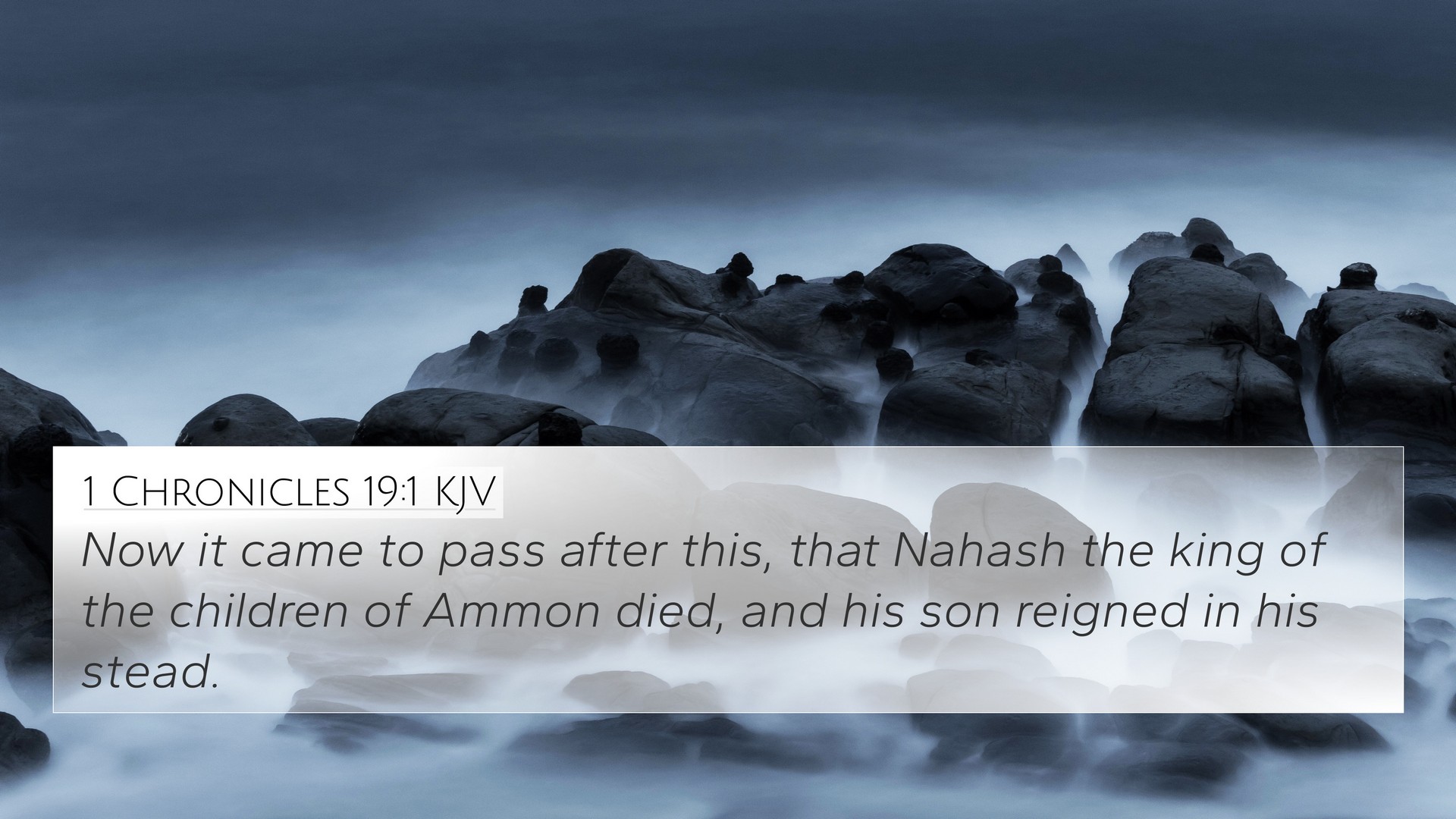Understanding 1 Chronicles 19:1
Verse: "Now it came to pass after this, that Nahash the king of the children of Ammon died, and his son reigned in his stead."
This verse marks a significant moment in the history of Israel as it discusses the death of Nahash, the king of the Ammonites, and the succession of his son. To comprehend the implications of this event, it is essential to explore insights from historical narratives and inter-Biblical dialogue.
Summary of Insights from Public Domain Commentaries
Combining perspectives from notable commentaries, we can glean a richer understanding:
- Matthew Henry: Henry emphasizes the political dynamics at play here. The death of Nahash left a vacancy that could potentially alter the hostility between Israel and Ammon. The following actions by David, the king of Israel, reflect the strategic nature of these relationships.
- Albert Barnes: Barnes points out that the Ammonites and Israelites had a complicated relationship, fraught with conflict and the potential for alliances. With Nahash’s death, there was an opportunity for peace or further strife based on the new king's disposition towards Israel.
- Adam Clarke: Clarke adds depth by discussing the significance of naming the successor. It is notable that the new king of Ammon will shape the future of interactions with Israel, highlighting the importance of leadership transitions in Biblical narratives.
Significance of the Verse
The death of Nahash can be seen as a turning point. This event is not only historical but also symbolic of the constant flux in political power that influences God’s covenant people.
Lessons Learned
From this passage, we can derive important lessons regarding leadership, the uncertainty of political power, and the divine orchestration of events for His purposes.
Related Bible Cross-References
Understanding 1 Chronicles 19:1 can be enhanced by considering various cross-references, which illuminate connections between this verse and other significant passages:
- 1 Samuel 11:1: This passage recounts Nahash's oppressive actions against the Israelites, providing context to his adversarial relationship with Israel.
- 2 Samuel 10:1-2: The actions of David after Nahash’s death serve as a direct response, showcasing the continuity of Israel’s narrative.
- 1 Chronicles 18:1: This highlights David’s military successes, further contextualizing the geopolitical landscape during Nahash’s reign.
- Deuteronomy 23:3: This verse forbids Ammonite entry into the congregation of the Lord, emphasizing the enduring enmity between these nations.
- 2 Samuel 12:26-31: Discussing future engagements with the Ammonites, further linking the political narrative of Israel with neighboring territories.
- Isaiah 17:1: Prophetic insights regarding Damascus and the broader geopolitical implications that include Ammonite actions.
- Jeremiah 49:1-6: A prophecy against Ammon that provides an eschatological view of the outcomes related to their kingship.
Tools for Bible Cross-Referencing
Various tools can assist in exploring these connections:
- Bible Concordance: A comprehensive index of words found in the Bible that can aid in locating thematic elements.
- Bible Cross-Reference Guide: Often included in study Bibles, these guides show related verses and themes.
- Bible Reference Resources: Digital and print resources that offer structured connectivity between passages.
How to Use Bible Cross-References
Engaging with cross-references allows for a deeper understanding and facilitates thematic Bible verse connections. Here are some methods:
- Compare the narratives and identify key themes.
- Trace the lineage of characters to understand familial and political dynamics.
- Analyze prophetic utterances in relation to historical events, providing a clearer picture of God's overarching plan.
Conclusion
1 Chronicles 19:1 serves as a crucial element in the biblical narrative, inviting readers to explore the interplay of leadership, politics, and divine providence. By examining related biblical texts, one can enrich their understanding and enhance their study through cross-referencing.





